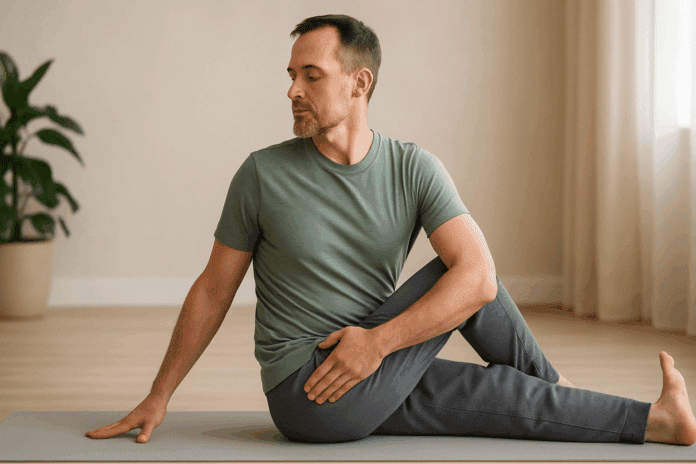Understanding the Anatomy of Lower Back Strain
Lower back strain is one of the most prevalent musculoskeletal issues among adults, particularly those with sedentary jobs, poor posture, or physically demanding routines. The lower back, or lumbar spine, supports much of the upper body’s weight while facilitating mobility and flexibility. This region includes not only the vertebrae and intervertebral discs but also critical soft tissues like ligaments, tendons, and the often-overlooked lower back side muscles—key players in both movement and spinal stability. When these muscles or connective tissues become overstretched or torn, the result is what many commonly refer to as a back tweak or strain.
You may also like : Best Stretches for Sore Legs and Tight Thigh Muscles: How to Relieve Upper Leg Pain Safely and Naturally
It’s important to recognize that not all lower back pain stems from the same root cause. A back strain differs from other spinal issues like herniated discs or degenerative disc disease. Back strain relief typically focuses on reducing muscle inflammation, restoring normal motion, and enhancing strength to prevent recurrence. Understanding how to relieve lower back strain begins with identifying which activities or postures may have triggered the discomfort. Did the pain come on suddenly after lifting something heavy or gradually develop due to prolonged sitting? Answering these questions can guide appropriate treatment strategies and stretching protocols.
The role of lower back side muscles, such as the quadratus lumborum, gluteus medius, and erector spinae, is often underappreciated in public discussions about back health. Yet weakness or tightness in these muscles can lead to instability, compensatory movement patterns, and chronic discomfort. Effective strategies for how to relieve back strain must therefore go beyond superficial remedies to address the root muscular imbalances and movement limitations.
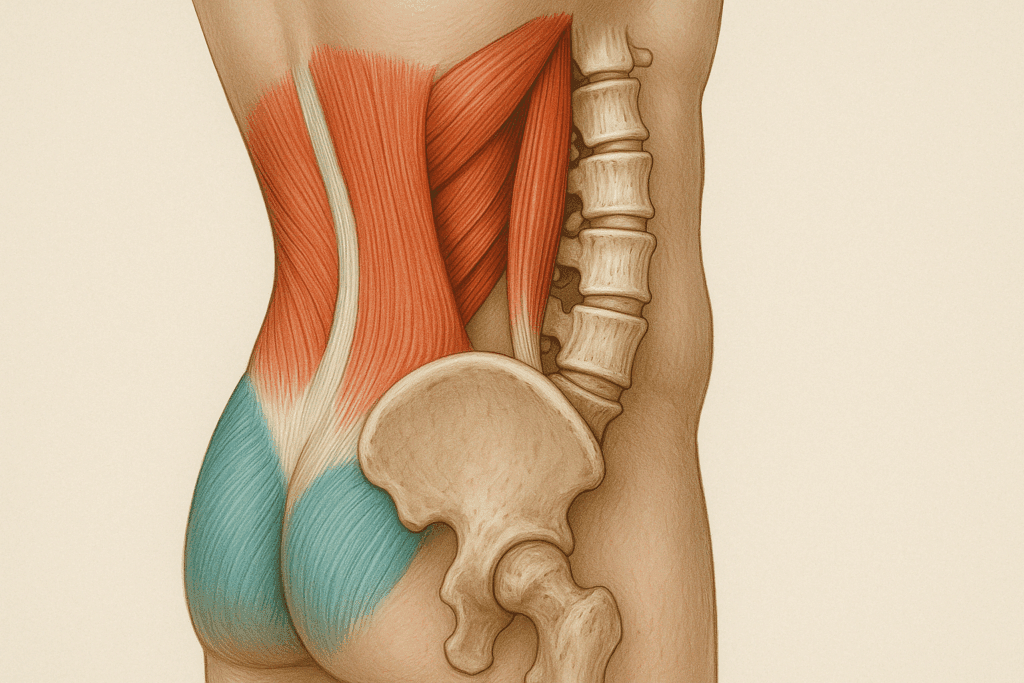
Understanding the Role of Inflammation in Lower Back Strain
One of the most common underlying contributors to lower back discomfort is inflammation. Whether acute or chronic, inflammation can impair mobility, irritate nerves, and intensify pain. While inflammation is a natural part of the body’s healing response, unresolved or excessive inflammation can prolong symptoms and inhibit recovery.
To combat this, many healthcare professionals emphasize the importance of anti-inflammatory interventions in conjunction with physical therapies. Diet plays a crucial role here. Nutritional choices that emphasize whole, unprocessed foods—especially those rich in omega-3 fatty acids like wild-caught salmon, walnuts, and flaxseeds—can help regulate the body’s inflammatory response. Antioxidant-rich fruits and vegetables, particularly those high in vitamin C, vitamin E, and polyphenols, also contribute to tissue repair and immune modulation.
Chronic stress is another factor that drives inflammation. Elevated cortisol levels, often seen in individuals experiencing persistent emotional or psychological stress, can exacerbate lower back pain and muscular tension. Incorporating stress-reducing practices such as meditation, journaling, and yoga nidra can have far-reaching effects not only on the nervous system but also on inflammatory markers. Learning how to relieve lower back strain, therefore, involves a deeper look at physiological systems beyond just muscles and joints.
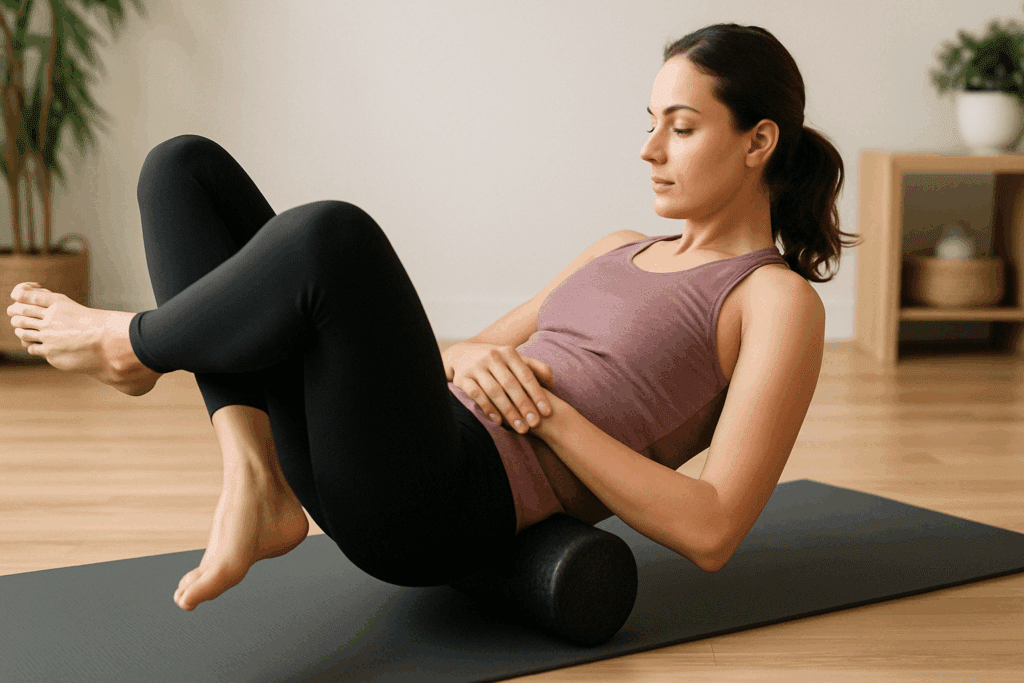
Myofascial Release and Soft Tissue Therapies
While stretching addresses muscle length and flexibility, it may not fully target restrictions within the fascial system—a network of connective tissue that envelops muscles and organs. Fascia can become tight or adhered due to repetitive movements, poor posture, or injury, contributing to restricted mobility and chronic discomfort.
Myofascial release techniques, including foam rolling, trigger point therapy, and professional bodywork (such as Rolfing or structural integration), can help break down these adhesions and restore tissue elasticity. Foam rolling the glutes, piriformis, and thoracolumbar fascia offers particular benefits for those experiencing tightness in the lower back side muscles.
Manual therapies like massage, chiropractic adjustments, and osteopathic manipulation can also play a significant role in back strain relief. These treatments help realign the spine, release joint fixations, and improve neuromuscular communication. It’s important to seek out licensed professionals with experience in treating lower back issues, as improper techniques can worsen symptoms.
Acupuncture, an ancient practice grounded in Traditional Chinese Medicine, has also garnered attention for its role in managing lower back strain. By stimulating specific points along energy meridians, acupuncture may influence pain signaling pathways and reduce muscle spasms. Several clinical trials have demonstrated its effectiveness in reducing chronic low back pain, making it a valuable adjunct for individuals exploring how to relieve back strain beyond conventional means.
Why Stretching Is Essential for Lower Back Health
Stretching serves as a cornerstone of any holistic back strain relief plan. When the lower back becomes tight due to poor posture, stress, or overexertion, blood flow decreases, and muscular tension builds. Stretching counteracts these issues by elongating the muscles, improving circulation, and releasing endorphins—our body’s natural painkillers. Not only does stretching provide immediate relief, but it also sets the stage for long-term improvement by restoring flexibility and promoting better movement mechanics.
Individuals looking for the best way to relieve lower back strain often seek quick fixes such as painkillers or hot/cold therapy. While these can be helpful in acute phases, they don’t offer the long-lasting benefits of consistent flexibility training. A structured stretching regimen specifically targeting the lower back side muscles and surrounding areas, like the hips and hamstrings, can significantly reduce strain on the lumbar spine. This is particularly important for those recovering from a back tweak, as stiffness can exacerbate compensatory patterns that delay recovery.
There’s also a powerful psychological component to stretching. Intentional movement, especially when combined with deep breathing, calms the nervous system and decreases the perception of pain. For many, the experience of learning how to relieve back strain through mindful stretching becomes a meditative practice, fostering a sense of control over their recovery process. It’s this integration of body and mind that often yields the most sustainable results.
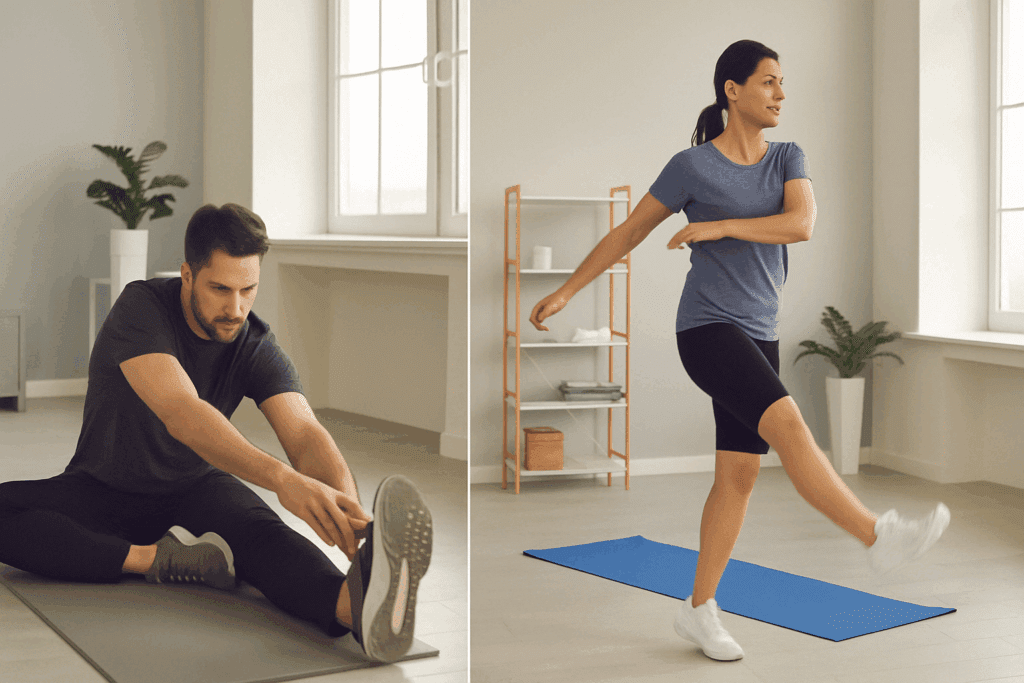
Dynamic vs. Static Stretching: What Works Best for Lower Back Strain
When exploring how to relieve lower back strain through stretching, it’s important to differentiate between static and dynamic approaches. Static stretching involves holding a stretch for a period—typically 20 to 60 seconds—to improve tissue elasticity and range of motion. This is ideal for post-exercise cooldowns or as part of a daily flexibility routine. Static stretches targeting the hamstrings, hip flexors, and lower back side muscles help reduce the cumulative tension that contributes to lumbar discomfort.
Dynamic stretching, by contrast, involves controlled, rhythmic movements that gently prepare the muscles for activity. These are often used as warmups and can be particularly effective for individuals with mild back tweaks who are looking to ease stiffness without aggravating symptoms. Examples include leg swings, torso rotations, and hip circles, which all gently mobilize the spine and hips while increasing core temperature.
For those wondering about the best way to relieve lower back strain, a hybrid approach often yields the most effective results. Dynamic stretches can serve as a gentle warm-up to increase blood flow and lubrication of the joints. Once the tissues are primed, static stretches can then be employed to target specific muscle tightness, particularly in the lower back side muscles. Alternating between these methods helps maintain a balance between mobility and stability, reducing the likelihood of reinjury.
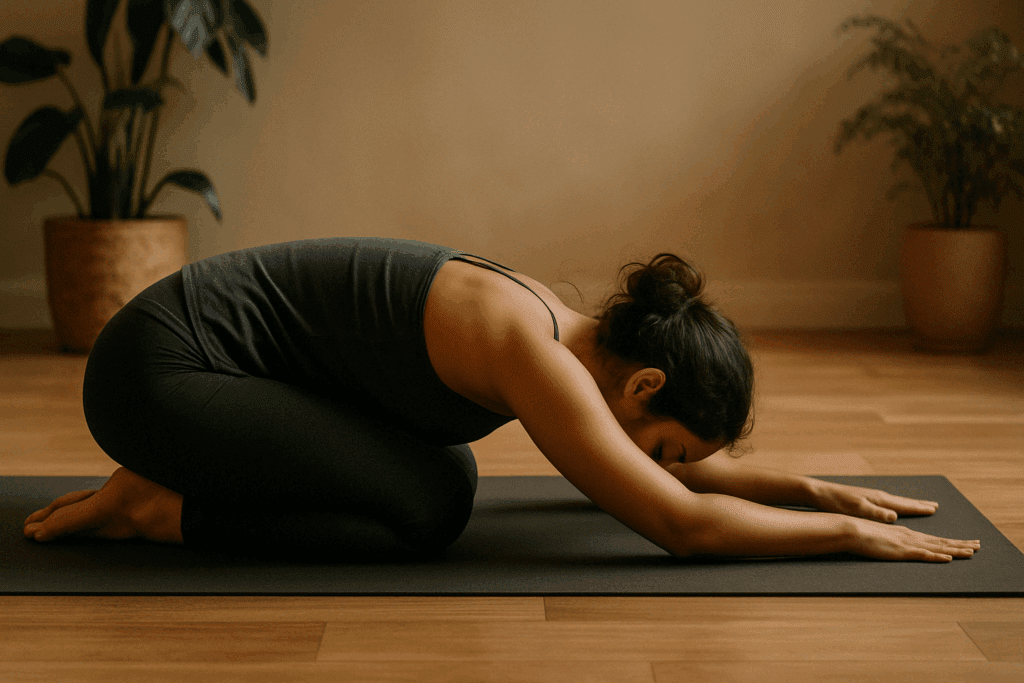
Expert-Recommended Stretches for Lasting Relief
While no single stretch is a cure-all, certain movements have stood the test of time and clinical scrutiny when it comes to back strain relief. One foundational stretch is the child’s pose, a yoga position that gently elongates the spine while reducing tension in the lumbar area. When performed with mindful breathing, this posture can help reset the nervous system and facilitate relaxation of the lower back side muscles.
The knee-to-chest stretch is another effective technique for how to relieve lower back strain. By bringing one or both knees toward the chest while lying on your back, the lumbar spine is gently decompressed, allowing the paraspinal muscles to release accumulated tension. This movement can be particularly beneficial for individuals dealing with postural strain from prolonged sitting or standing.
A more advanced option is the seated spinal twist, which targets both the lower back and the obliques. This stretch not only improves rotational mobility—a crucial component of spine health—but also activates the deeper muscles of the core that support spinal alignment. For those recovering from a back tweak, modifications such as using a cushion or performing the twist with minimal rotation can provide benefits without overexertion.
Don’t overlook the importance of hip and hamstring flexibility. Tight hip flexors can tilt the pelvis forward, increasing the arch in the lower back and placing excessive strain on the lumbar vertebrae. Similarly, short hamstrings can restrict posterior pelvic tilt, limiting spinal movement and exacerbating lower back discomfort. Stretches like the standing hamstring stretch or the supine figure-four pose target these adjacent areas, offering indirect but powerful support for lower back strain relief.
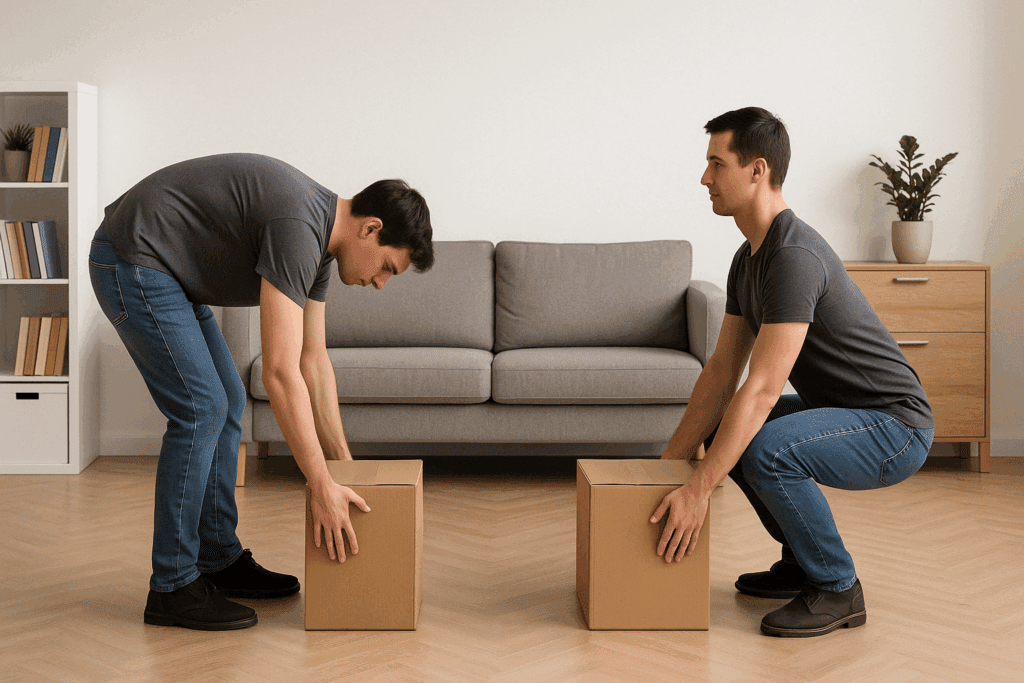
The Biomechanics of Movement: How Poor Form Leads to Strain
Mechanical inefficiencies in daily movement patterns are a major contributor to lower back strain. Improper lifting techniques, faulty gait mechanics, and habitual slouching all place undue stress on the lumbar region. Over time, these repetitive strains can accumulate, leading to microtrauma and eventual injury.
To address these issues, functional movement assessments can be incredibly informative. These evaluations, often conducted by physical therapists or movement specialists, identify biomechanical weaknesses and asymmetries that may predispose an individual to back strain. For instance, weak glutes or tight hip flexors may cause compensatory movement in the lumbar spine during squats or stair climbing.
Corrective exercises tailored to address these deficiencies can dramatically reduce strain on the lower back. Training movement quality—rather than simply increasing load or intensity—should be a priority for those recovering from or hoping to prevent back tweaks. Activities like Pilates and functional strength training emphasize core control and alignment, helping to engrain healthier movement patterns.
Many people also find relief by incorporating walking into their daily routine. Walking promotes gentle spinal motion, engages the core stabilizers, and enhances circulation—all factors that support lower back strain relief. When performed with proper posture and supportive footwear, walking can serve as both a therapeutic and preventive activity.
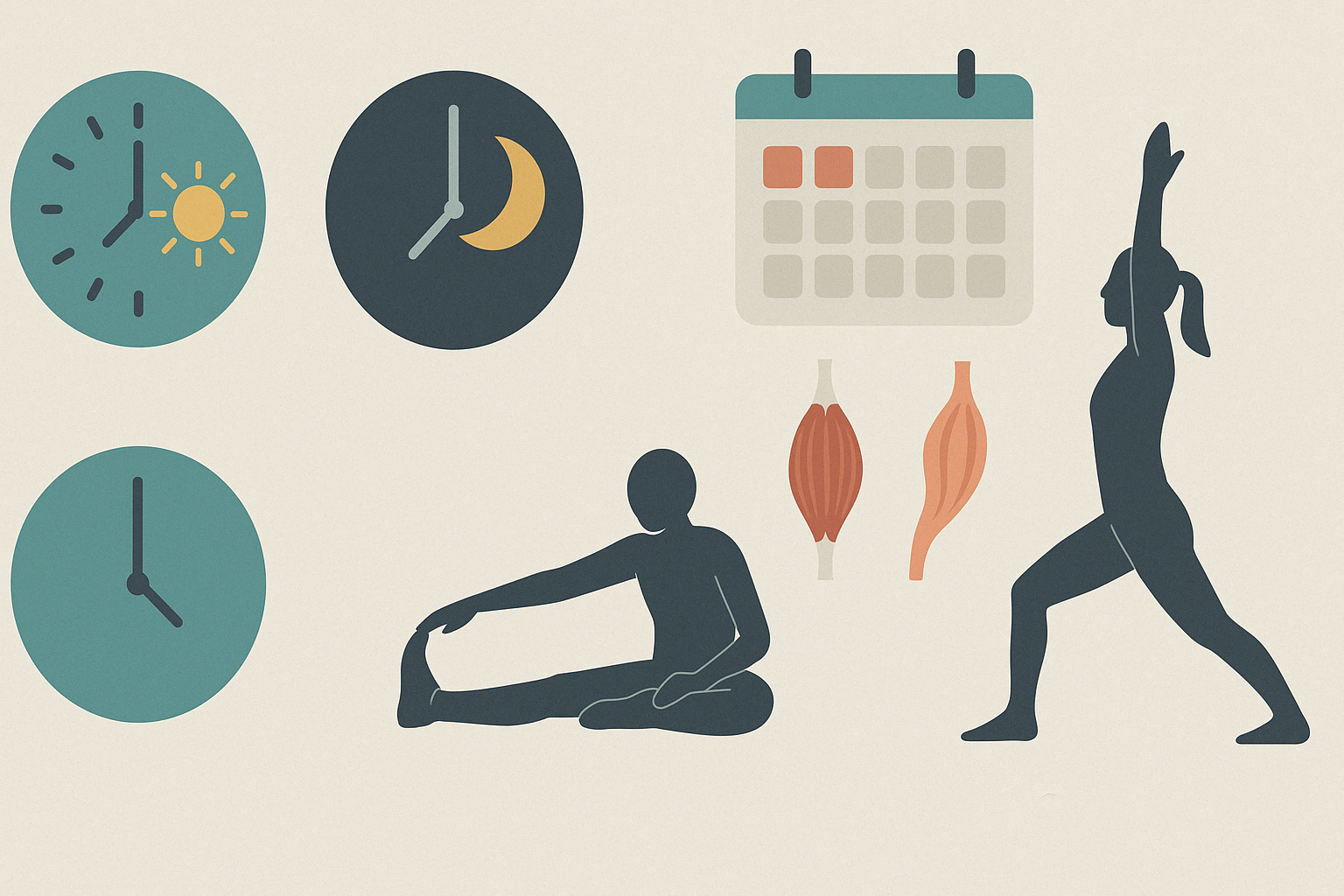
Stretching Frequency and Duration for Sustainable Results
Consistency is crucial when it comes to using stretching as the best way to relieve lower back strain. While a single session may provide temporary comfort, long-term improvements in flexibility and function require ongoing practice. Experts generally recommend stretching at least three to five times per week, with each session lasting 15 to 30 minutes. Over time, this regularity can yield significant improvements in muscular elasticity, joint range of motion, and overall spinal health.
It’s equally important to listen to your body’s feedback during stretching. Intensity should be moderate—you should feel a gentle pull, not sharp pain. Overstretching can lead to microtears in already compromised tissues, setting back the recovery process. For individuals recovering from a back tweak or acute strain, beginning with shorter, more frequent sessions may be more beneficial than infrequent but intense routines.
Duration matters too. Holding each static stretch for a minimum of 30 seconds allows the muscle spindle fibers to relax, enabling deeper elongation. For areas with persistent tightness, such as the lower back side muscles, longer holds or repeated sets can be particularly effective. Incorporating breathing techniques—like inhaling deeply and exhaling as you move deeper into the stretch—enhances relaxation and muscular release.
Additionally, integrating stretching into daily habits, such as morning routines or evening wind-downs, helps reinforce neuromuscular pathways that promote spinal alignment and flexibility. Over time, these small investments in movement add up, offering not just symptomatic relief but a profound transformation in how your body responds to stress and physical demands.
Preventing Recurrence: The Role of Strength Training and Ergonomics
Stretching alone is rarely sufficient to maintain long-term back health. Once acute symptoms have subsided, strengthening the core, glutes, and lower back side muscles becomes critical for preventing future strain. Functional strength training not only enhances muscular resilience but also reinforces proper movement patterns, reducing the likelihood of recurring injuries.
Core exercises such as planks, bird-dogs, and dead bugs engage the deep stabilizers of the spine, promoting balance and postural control. When these muscles are strong and well-coordinated, they absorb mechanical stress more effectively, minimizing the burden on the lumbar region. Glute strengthening, through movements like hip bridges and step-ups, supports the pelvis and offloads tension from the lower back.
Equally important is optimizing your work and living environment. Poor ergonomics—such as unsupportive chairs, improper monitor height, or excessive forward head posture—can create chronic stress on the spine. Investing in an ergonomic workstation, using lumbar cushions, or taking regular standing breaks can dramatically reduce the risk of back tweaks. These preventative strategies, when combined with targeted stretching, form a comprehensive blueprint for back strain relief and long-term spinal health.
Even footwear and sleep posture deserve attention. Wearing unsupportive shoes or sleeping on overly soft mattresses can subtly affect spinal alignment over time. Addressing these less obvious factors can provide additional support for individuals seeking to understand how to relieve lower back strain more effectively and sustainably.
How Breathing and Mindfulness Enhance Stretching Outcomes
An often-overlooked but incredibly powerful component of stretching for back strain relief is the integration of breath and mindfulness. Conscious breathing during stretches helps calm the nervous system, reducing muscle guarding and facilitating a deeper release. It shifts the body from a sympathetic “fight or flight” state into a parasympathetic “rest and digest” mode, which is optimal for healing.
Mindfulness brings your attention to the present moment, allowing you to tune into sensations and detect areas of tension that might otherwise go unnoticed. When applied to stretching, mindfulness transforms a mechanical activity into a deeply embodied experience. For instance, focusing on the breath during a spinal twist not only enhances the stretch but also fosters a meditative state that can reduce the psychological impact of chronic discomfort.
Incorporating breathwork—such as diaphragmatic breathing or box breathing—into your stretching routine amplifies its effectiveness. These techniques improve oxygen delivery to muscles, enhance circulation, and help regulate stress hormones that can contribute to muscle tension. Over time, the combined benefits of stretching, breath, and mindfulness become greater than the sum of their parts, leading to lasting relief and a stronger connection to your body’s needs.
Community Support and Education
Access to accurate information and social support can make a significant difference in how individuals manage and recover from lower back strain. Joining support groups—either online or in person—can offer encouragement, practical tips, and a sense of shared experience that eases the emotional burden of chronic pain.
Educational workshops on ergonomics, movement quality, and self-care strategies also empower individuals to take proactive control of their spinal health. Employers who invest in workplace wellness initiatives, such as standing desks or lunchtime mobility classes, often see reductions in absenteeism and improvements in employee well-being.
Health practitioners can support these efforts by providing patient-centered education that emphasizes realistic expectations, self-efficacy, and the importance of consistency over perfection. When individuals understand the why behind each recommendation, they’re more likely to adhere to it, fostering better outcomes in both the short and long term.
Frequently Asked Questions: Relieving and Preventing Lower Back Strain
1. Can hydration and nutrition really impact lower back pain recovery?
Absolutely, hydration and nutrition play a more significant role in back strain relief than most people realize. Dehydrated muscles and connective tissues are more prone to tightness and injury, which can worsen a back tweak or slow the healing process. Staying consistently hydrated helps maintain the elasticity of soft tissues, including the lower back side muscles, and supports disc hydration. Nutritionally, an anti-inflammatory diet—rich in omega-3 fatty acids, antioxidants, and lean protein—can support tissue repair and reduce chronic inflammation that exacerbates pain. While stretching is often the first recommendation on how to relieve back strain, optimizing your internal environment through nutrition and hydration complements and accelerates your progress.
2. What role do emotions and stress play in lower back strain?
Chronic stress and emotional tension are frequently overlooked but powerful contributors to lower back discomfort. Psychological stress can cause involuntary muscle clenching, particularly in the lower back side muscles, leading to persistent tightness and eventually a back tweak. Elevated cortisol from prolonged stress also heightens the perception of pain and impairs tissue repair. Addressing how to relieve lower back strain often involves calming the nervous system through mindfulness, breathing exercises, or cognitive behavioral therapy. Incorporating emotional regulation strategies can be just as essential as physical therapy when striving for lasting back strain relief.
3. Are standing desks beneficial for back strain relief, or can they make things worse?
Standing desks can be both helpful and harmful, depending on how they’re used. When implemented with proper posture, supportive footwear, and periodic movement, they can reduce compression in the lumbar spine and improve circulation. However, prolonged standing without adequate breaks or poor ergonomic setup can overload the lower back side muscles and aggravate discomfort. To achieve the best way to relieve lower back strain while using a standing desk, alternate between sitting and standing, engage your core, and shift weight periodically. Think of it not as a fix in itself, but as a supportive tool within a larger strategy for managing lower back health.
4. How does breathing technique affect lower back strain recovery?
The way you breathe can dramatically influence how your body responds to pain and tension. Shallow, chest-dominant breathing often accompanies stress, which can tighten the diaphragm and increase strain on the lower back side muscles. In contrast, diaphragmatic or belly breathing activates the parasympathetic nervous system, lowering muscle tension and enhancing oxygen delivery to healing tissues. This breathing style also engages the core more effectively, supporting spinal alignment and stability. If you’re exploring how to relieve lower back strain in a holistic way, incorporating breathwork into your stretching or strength training routine can yield surprisingly powerful results.
5. Are there specific sleeping positions that prevent a back tweak overnight?
Yes, the way you sleep can either support your spine or contribute to ongoing strain. Sleeping on your back with a pillow under your knees helps maintain a neutral spine position and reduces pressure on the lower back side muscles. Side sleeping with a pillow between your knees can also prevent pelvic rotation that stresses the lumbar spine. In contrast, sleeping on your stomach may increase the risk of a back tweak due to excessive lumbar extension. High-quality sleep promotes recovery and tissue repair, so adjusting your posture and mattress firmness is an essential component of back strain relief.
6. Can mental imagery or visualization aid in back strain recovery?
Interestingly, mental imagery can support neuromuscular recovery by rewiring pain pathways and reducing fear-avoidant movement patterns. Visualizing smooth, pain-free motion activates similar brain regions involved in physical movement, which may help reduce sensitivity in those recovering from a back tweak. This technique is especially helpful for individuals hesitant to move due to fear of re-injury. When combined with physical therapy, visualization exercises can accelerate progress and reinforce safe motor patterns. For those committed to the best way to relieve lower back strain, incorporating cognitive tools like imagery can offer an additional edge in healing.
7. Do wearable tech devices really help with posture correction and back strain relief?
Wearable posture correctors and smart sensors are increasingly used to address poor posture and reinforce healthier spinal alignment. These devices provide real-time feedback, alerting users when they slouch or shift into positions that strain the lower back side muscles. While they don’t treat the root cause of a back tweak, they raise awareness and encourage more consistent postural habits. For individuals unsure how to relieve back strain during the workday, this technology can serve as a gentle reminder to reset posture and engage the core. However, it’s crucial not to become reliant—use them as training tools, not permanent supports.
8. How does hip mobility influence lower back strain?
The hips and lower back share a kinetic chain, meaning that restricted hip movement often shifts stress to the lumbar spine. Limited hip flexor or external rotator mobility can force the back to compensate during common movements like walking, squatting, or standing up. This compensation increases strain on the lower back side muscles, setting the stage for a back tweak. Enhancing hip mobility through targeted stretching and strengthening allows for smoother pelvic motion and reduced lumbar stress. If you’re exploring how to relieve lower back strain effectively, addressing hip tightness is often a game-changer.
9. What is the connection between fascia and persistent lower back pain?
Fascia is a network of connective tissue that surrounds muscles, and when it becomes stiff or adhered, it can contribute to chronic tension and pain. Fascial restrictions in the thoracolumbar region often trap tension in the lower back side muscles, even when the underlying muscle tissue is not significantly damaged. Techniques like foam rolling, myofascial release therapy, and even targeted yoga poses can help restore fascial elasticity. These methods enhance blood flow, reduce muscular rigidity, and facilitate deeper back strain relief. For persistent or recurrent cases, addressing fascial health may hold the key to resolving discomfort more permanently.
10. Are there long-term strategies to prevent recurring back tweaks?
Preventing recurrent lower back issues involves more than just symptom management—it requires lifestyle redesign. A long-term strategy includes regular core and glute strengthening, consistent flexibility work for the hips and hamstrings, ergonomic mindfulness at workstations, and awareness of habitual movement patterns. Even stress management and sleep quality play roles in ensuring muscular resilience and neural recovery. To find the best way to relieve lower back strain for good, you must look beyond isolated techniques and build a sustainable system of support. By doing so, you not only recover more fully from a back tweak but reduce the likelihood of future disruptions to your health and mobility.
Conclusion: Integrating Stretching Into a Long-Term Strategy for Lower Back Strain Relief
The best way to relieve lower back strain is not found in a one-time solution but in a multifaceted, consistent approach that includes expert-recommended stretching techniques, functional strength training, mindful movement, and ergonomic awareness. Relief from a back tweak or persistent lumbar discomfort begins with understanding the complex interplay of muscles, joints, and lifestyle habits that influence spinal health.
Stretching remains a foundational tool in this process—particularly when targeted toward the lower back side muscles and surrounding regions like the hips and hamstrings. By addressing muscular tightness, improving circulation, and promoting flexibility, stretching serves as both a remedy and a preventive measure for lower back issues. The addition of breathwork and mindfulness deepens these effects, offering a holistic pathway toward healing.
Equally vital is the role of ongoing strength training and lifestyle adjustments. Without these, the benefits of stretching may be temporary. Incorporating regular movement into your day, investing in ergonomic furniture, and staying attuned to your body’s feedback all contribute to sustainable spinal well-being.
For those searching for how to relieve lower back strain in a way that lasts, the answer lies in patience, consistency, and an integrated approach. With time and commitment, what starts as a strategy for back strain relief can evolve into a lifestyle that supports flexibility, strength, and resilience at every stage of life.
Was this article helpful? Don’t let it stop with you. Share it right now with someone who needs to see it—whether it’s a friend, a colleague, or your whole network. And if staying ahead on this topic matters to you, subscribe to this publication for the most up-to-date information. You’ll get the latest insights delivered straight to you—no searching, no missing out.
Further Reading:
Best stretches for lower back flexibility and pain relief
10 Tips to Relieve Lower Back Pain, Recommended by Physical Therapists

